Day 1
After picking up our rental car at Kirkenes Airport, we headed straight for the Varanger Peninsula with the goal of reaching our accommodation in Vardø, where we’d be staying for the next three nights.
on our way to Vardø, we made a few quick stops. Although the skies were overcast, we used the soft light to our advantage, as it allowed for some productive mid-day photography without the usual harsh contrasts. Around Nesseby Church, we were rewarded with a great variety of birdlife including Red Knots, Common Ringed Plovers, Eurasian Oystercatchers, Eiders, Dunlin, Wood Sandpipers, Black Guillemots, and Red-necked Phalaropes.
Nesseby Church is a well-known stop for birders, with patches of coastal vegetation that attract a wide range of species, as well as two strips of beach that are particularly good for migrating waders.
After settling in and resting a bit at our accommodation in Vardø, we headed out again, this time for our first midnight outing to Komagvær Valley, with the Ruff as our main photographic target.
Before talking birds, a practical tip: a four-wheel-drive vehicle is a must to access the lek site. The track is rough and can be difficult to navigate with a standard car.
This Ruff lek is perhaps the most famous one on the peninsula and normally offers excellent photo opportunities. Unfortunately, just a day before our arrival, a nature reserve ranger had to cordon off the area with rope due to several visitors walking directly through the lekking ground, disturbing the birds. It’s a shame this kind of behavior still happens but it was ultimately a necessary step to protect the site.
Fortunately, we had our mobile hide with us and, with the ranger’s permission, were allowed to sit nearby. Although photography was a bit limited due to the distance, it was still a real treat to observe the Ruffs displaying in the golden Arctic light. If Ruff photography is a key goal, I’d recommend planning your visit for mid- to late May, when the lek is typically at its peak.
After leaving the lek, we still had beautiful soft light and continued exploring Komagvær Valley. We came across several more highlights including Lapland Longspur, Whimbrel, Willow Grouse, Golden Plover, and Long-tailed Skuas.
It was a long but rewarding first day—classic Varanger conditions, and a great start to the trip. Time now for some well-earned rest.





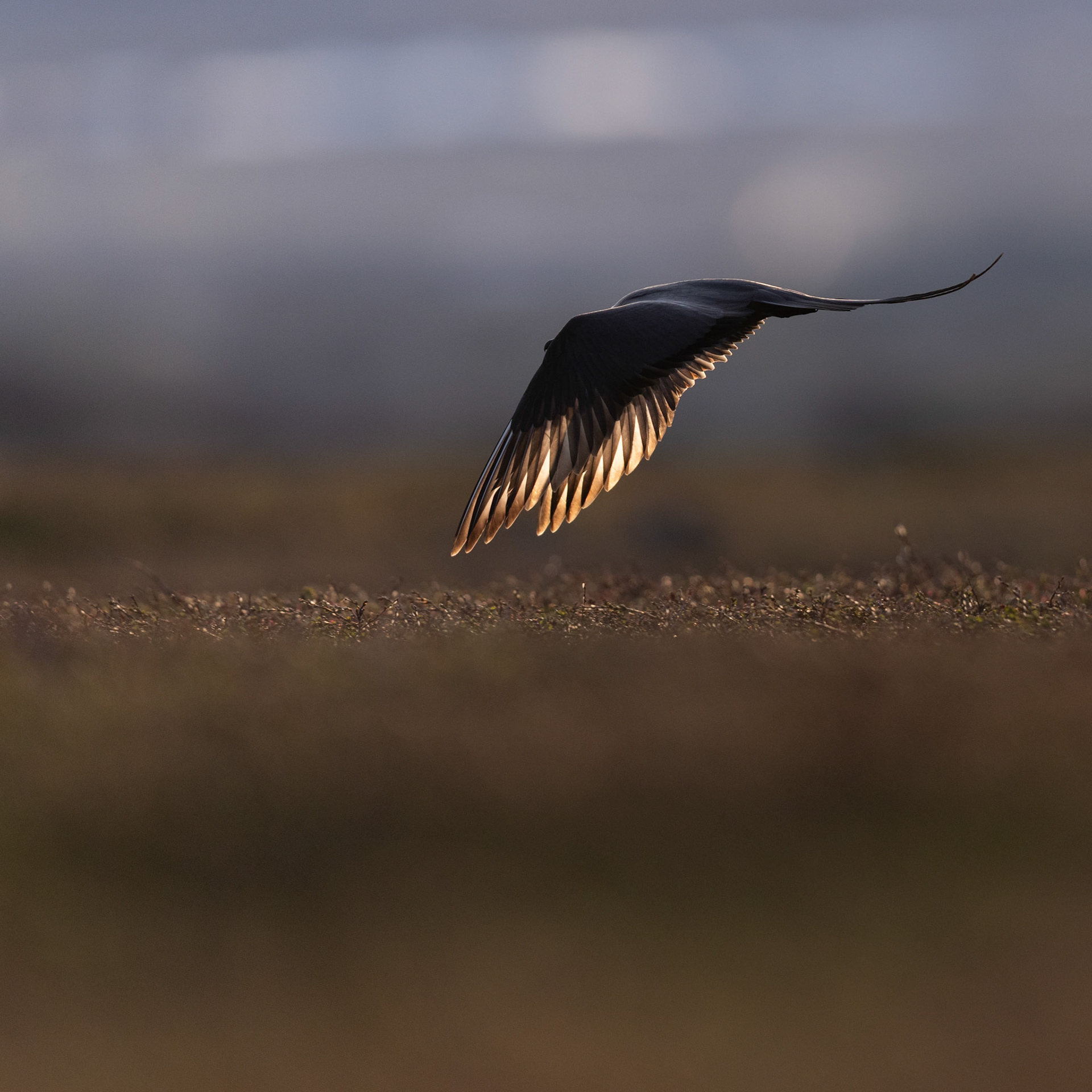
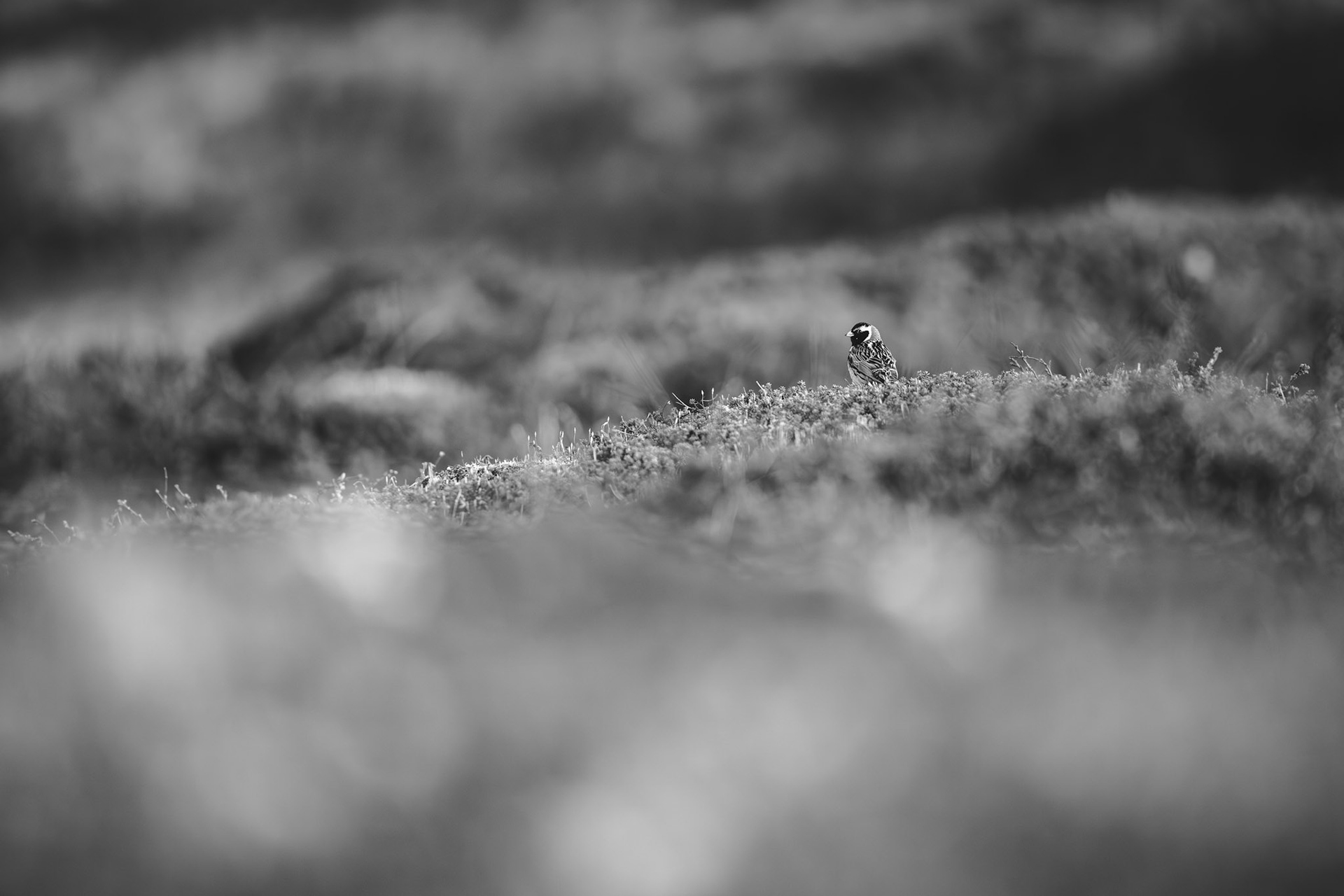




Day 2
After some daytime rest (yes - day, not night, thanks to the Arctic summer light), we set out for our next destination: Ekkerøya. This small island just off the Varanger coast is well known for its Black-legged Kittiwakes, which nest in large numbers on the sea cliffs.
Although the weather wasn’t ideal at first, overcast with occasional wind gusts, we still managed to observe and photograph the Kittiwakes as they circled and called above the cliffs.
Ekkerøya offers more than just Kittiwakes. At the top of the island, we had a particularly good session with both Arctic and Long-tailed Skuas, one of which was especially cooperative, offering some great photographic moments.
We decided to hike the full loop around the island, but in hindsight, we wouldn’t recommend it for bird photography. The trail didn’t offer much in terms of additional species or dramatic scenery, and bird activity was fairly low. That said, a lone Ruddy Turnstone in full breeding plumage gave us a brief but memorable moment as it paused just long enough for a few quick frames. We also spotted a potential ruff lek site, but the birds appeared inactive at the time.
Back at the car, we made a last-minute decision to check out the beach just before the causeway to Ekkerøya. Along the shore, we found a nice mix of waders, including Dunlins, Bar-tailed Godwits, Common Ringed Plovers, and several Ruffs. They were a bit skittish and not easy to approach, but we managed to capture a few decent shots, enough to add another layer to the day’s story.
before reaching our acommodation we had a search for dotterels at the dome. no luck this time, only a pair of arctic skuas.



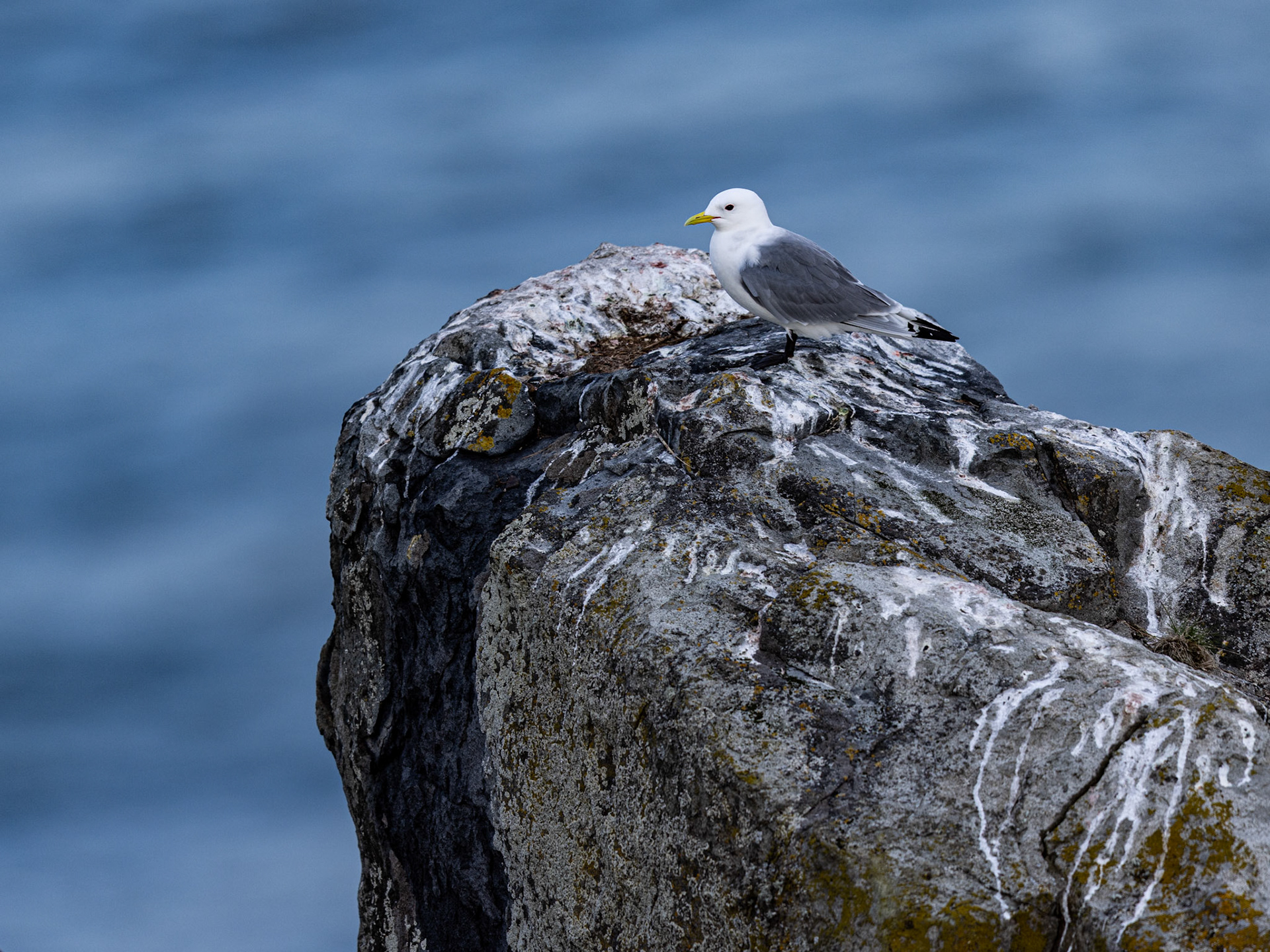



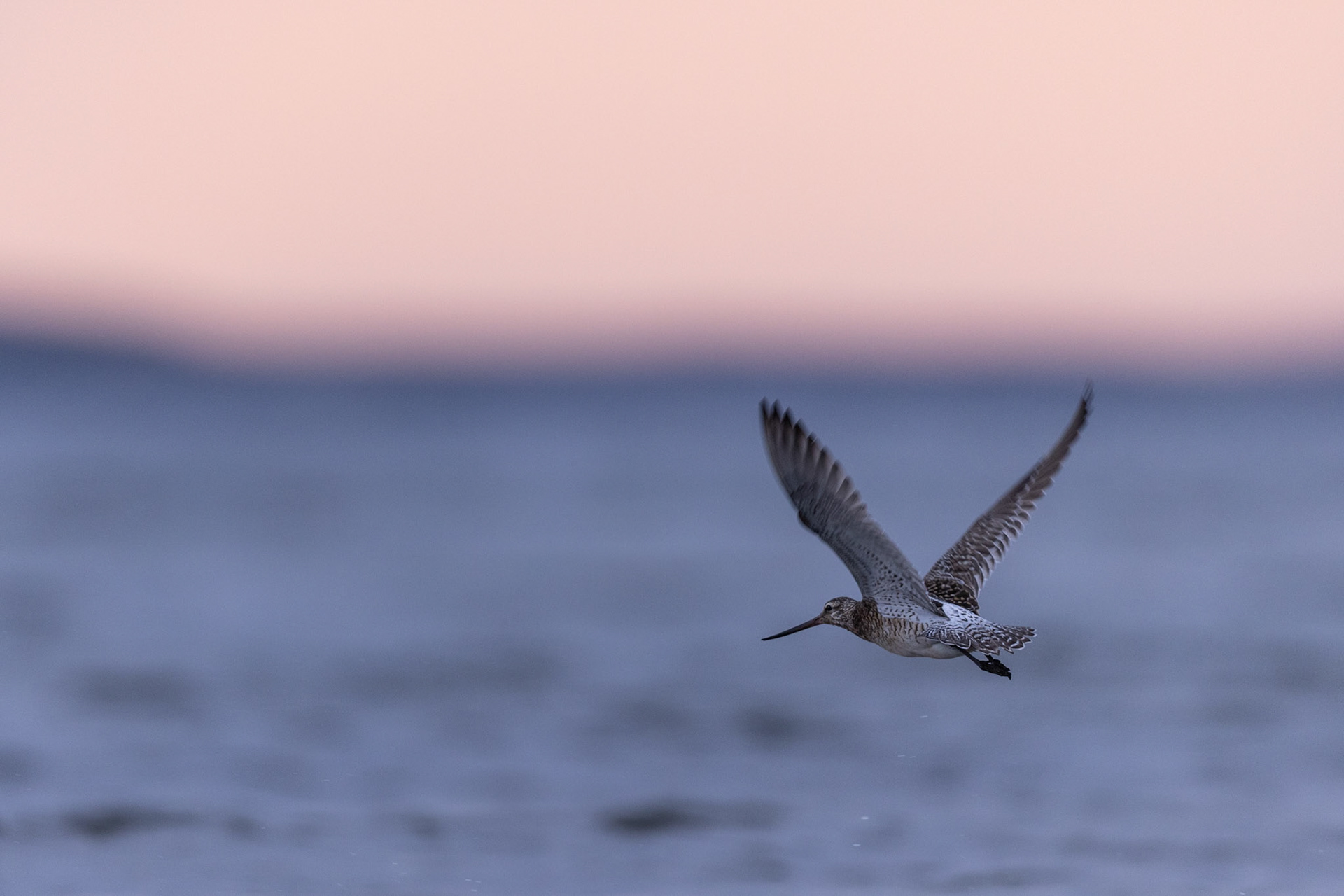
Day 3
The forecast called for overcast skiesp, erfect conditions for a day trip to Hornøya, one of Norway’s most iconic seabird colonies. Our original plan was to spend the night on the island, but unfortunately, a storm back in February had damaged the infrastructure, and overnight stays won’t be possible again until at least 2026. A real pity but completely out of our control.
Despite that, Hornøya delivered right from the moment we stepped ashore. All the usual stars were there to greet us: Common Guillemots, Atlantic Puffins, Razorbills, European Shags, and the much rarer Brünnich’s Guillemot. We spent several hours photographing everything from intimate portraits and behavioral details to wider landscape shots capturing the sheer chaos and beauty of the colony.
As the day progressed, the sun broke through a bit more than expected, making light conditions trickier at times but it was still an incredible place to visit, both for photography and for simply experiencing the raw energy of an Arctic seabird colony.
After returning to the mainland, we took a midday nap to recharge for another night session because in Varanger, some of the best light and bird activity happens when most people are asleep.
That night, we targeted a breeding site for Temminck’s Stint, a tiny, unassuming wader with surprisingly bold character. Its delicate and haunting call is one of those Arctic sounds that really stays with you. The site was located at Persfjord, and after a bit of searching, we found two pairs actively displaying. We managed a few environmental shots, but the real reward was watching the birds’ midnight courtship rituals. a true highlight of the trip so far.
Feeling energized, we decided to return to Komagvær Valley. Along the way, several ponds held Red-necked Phalaropes, spinning and feeding in their typical fashion, a nice bonus. Back in the valley, we once again encountered a cooperative Golden Plover, and one Long-tailed Skua that allowed for some close observation.
the surprise of the trip, already at day 3 was an arctic fox running across the tundra at distance once we reached the tunnel of vardö. truly amazing!
By then, my friend was completely exhausted, so I dropped Him off in Vardø but I still had some energy left and wanted to squeeze in one last session. It was well past golden hour, but light clouds lingered, creating soft, workable light even late at night.
Around Vardø, I had a fantastic encounter with a pair of Ruffs as well as several Redwings, active and vocal in the stillness. Before calling it the day, I made a quick stop at Svartnes, where - surprise! - I found another Temminck’s Stint. Not particularly active, but it posed long enough for a clean portrait. A fitting end to a long, beautiful Arctic summer day.


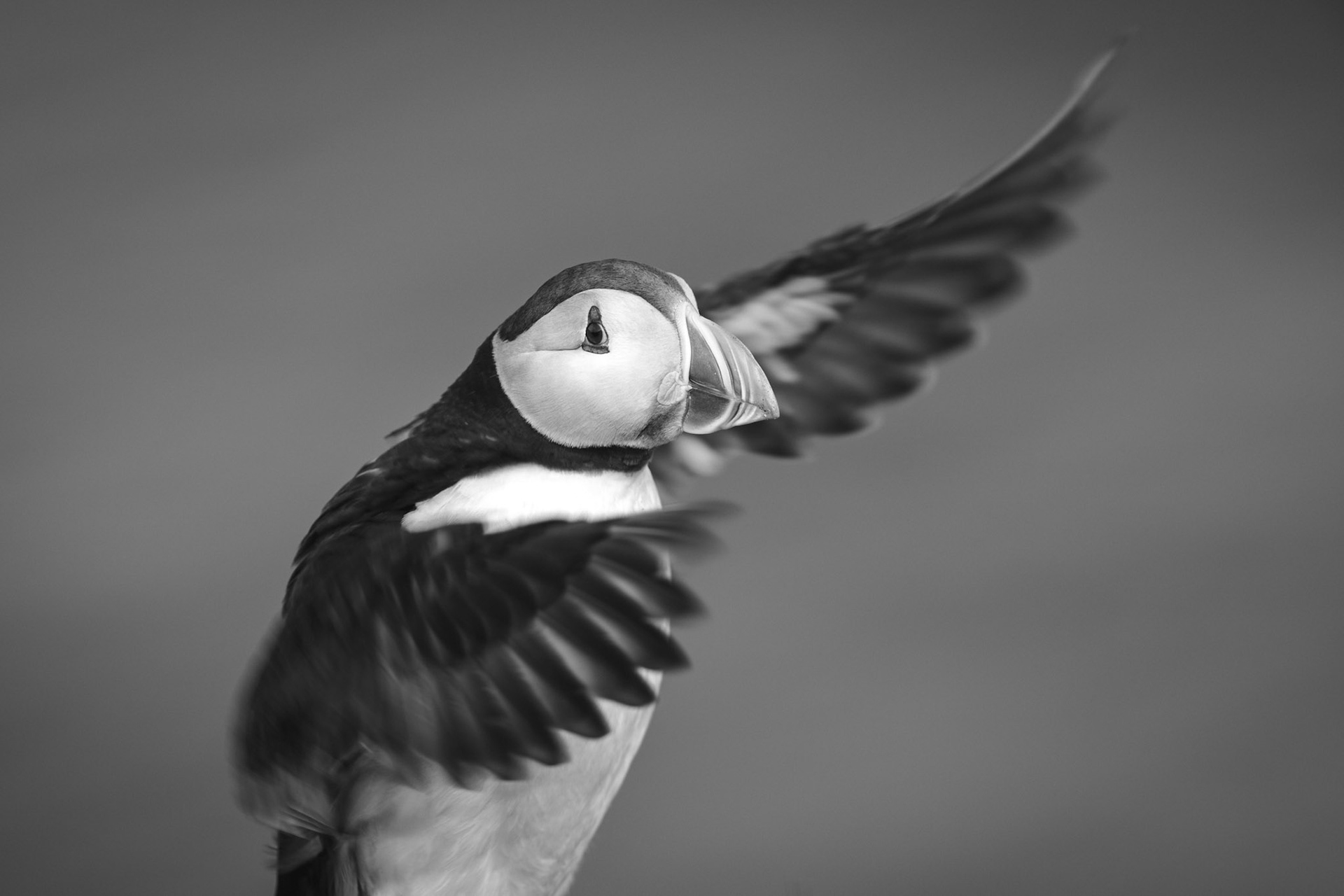

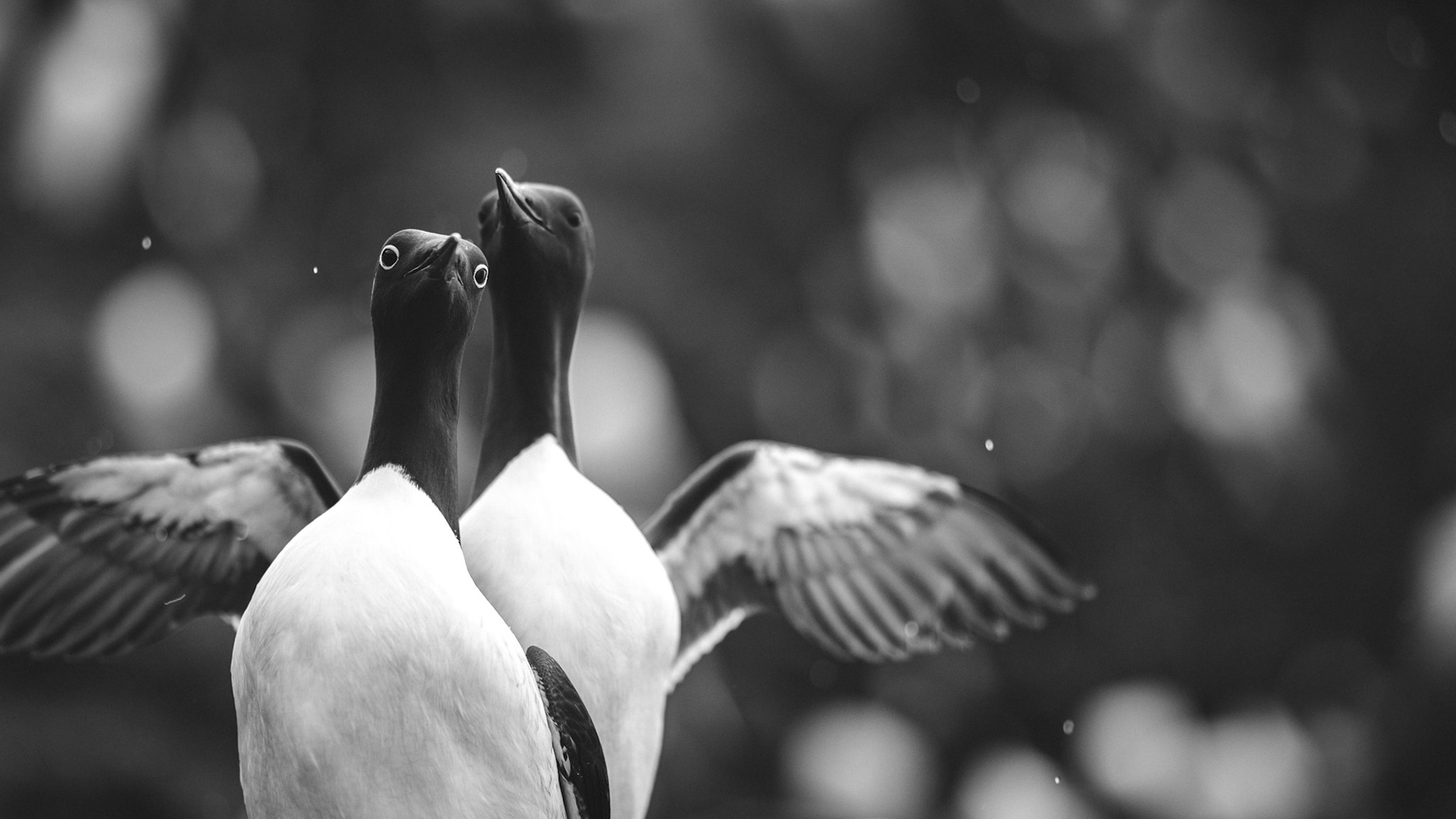





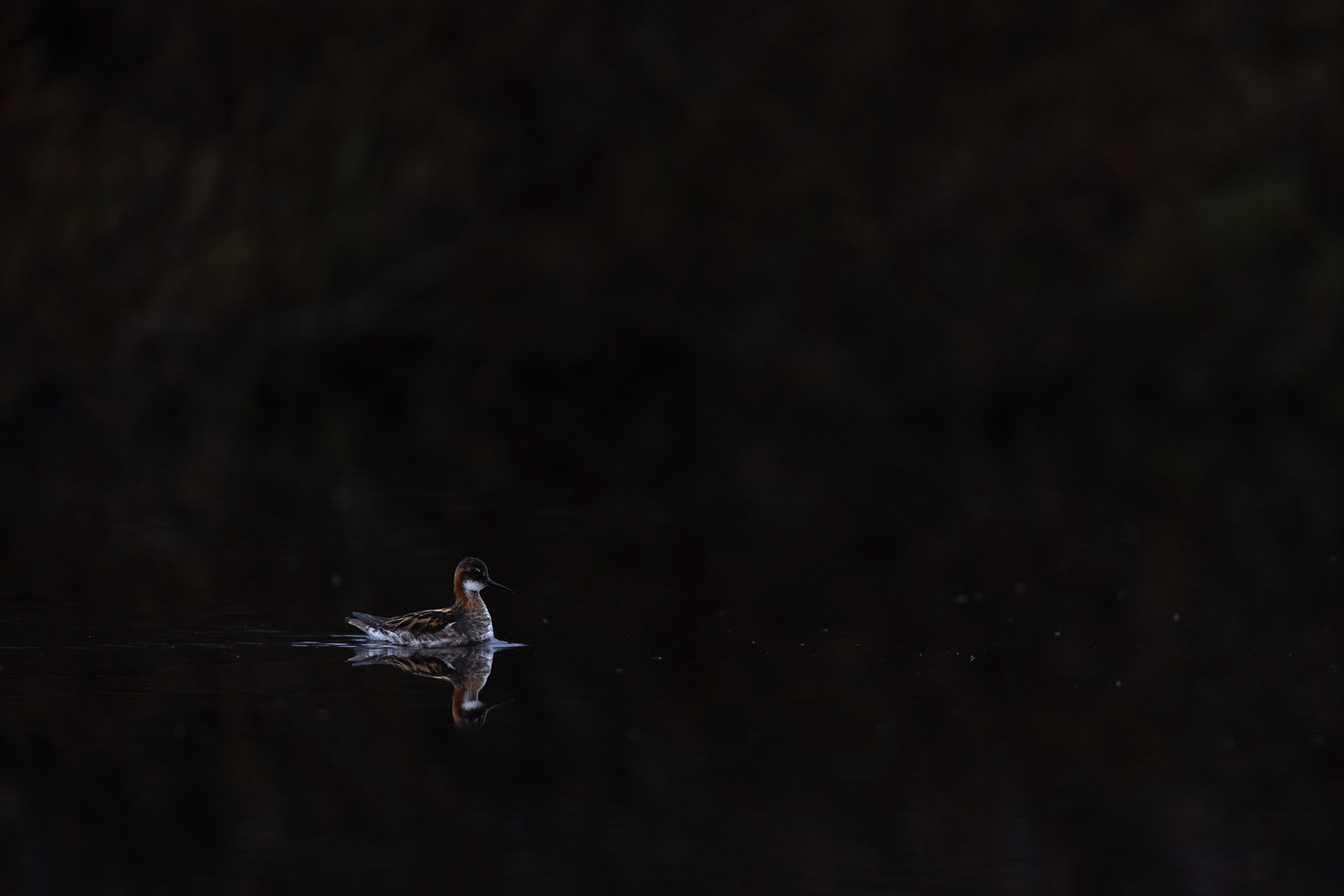



Day 4
By now, we had fully adjusted to the rhythm of limited sleep, which made us a bit restless during the quieter mid-day hours. So, we decided to head out for a drive to Hamningberg, spurred on by reports of a Yellow-billed Loon in the area. Although we didn’t have any luck finding it, the scenic drive alone made the trip worthwhile with rugged coastal cliffs, windswept tundra, and endless views of Arctic landscape that never disappoint.
For the night session, we had the privilege of joining Tobias Gjerde, a super-talented Norwegian photographer, to explore the Varanger tundra together. On our way to pick him up at Ekkerøya, we made a quick stop along the beach, where a few cooperative Dunlins and a Bar-tailed Godwit kicked things off nicely, even though the light wasn’t quite ideal at that moment.
Our destination for the night turned out to be a remote valley in the Golnes area, and what followed became one of the most unforgettable experiences of the entire trip.
We began by scanning for Whimbrels and Skuas, but it was Tobias who suddenly picked up the call of a Bar-tailed Godwit, a species I’ve long dreamt of photographing. We located the bird not far from where we were and began a slow, careful approach. For around 15 magical minutes, we shared space with a stunning male Bar-tailed Godwit in full breeding plumage, glowing in the soft Arctic light. An absolute highlight, one of those moments that sticks with you.
Still overwhelmed from that encounter, we continued deeper into the valley, and things just kept getting better.
In a stretch of no more than a few hundred meters, we found ourselves immersed in the company of Whimbrels, Skuas, Willow Grouse, Golden Plovers, Ruddy Turnstones, and Arctic Terns. all active under the midnight sun.
It was one of those Arctic nights where time disappears, and the landscape, light, and wildlife come together in a way that feels almost surreal.
A night I will never forget.
and I almost forgot to mentioned that I finally got to spot my first red-throated pipit. conditions were horrible photography wise, but still glad to spot it.









day 5
We were lucky enough to have one more night out with Tobias Gjerde, and this time we set our sights on the Båtsfjord area, hoping for a mix of lingering winter conditions and new species, especially Rock Ptarmigan, Temminck’s Stint, and the elusive Little Stint.
On the way, we made a stop at Høyholmen, a well-known hotspot for migrating birds. Unfortunately, we had no luck there this time, but the area is always worth checking, especially during peak migration. With that, we continued our journey deeper into the high tundra around Båtsfjord.
Our first stop was a Ruff lek site, where we spent about an hour. While the birds weren’t particularly active, the setting was peaceful, and the stillness of the moment made it a beautiful nature experience in itself.
As we continued on, we came across some open patches in the otherwise icy waters, where Temminck’s Stints were actively displaying. One particular flying shot of this charismatic little wader ended up being one of my favorite images of the trip.
Then came an unexpected encounter: a male Smew. a notoriously shy species and quite rare to photograph well. We attempted a slow, quiet approach, but eventually the bird took off. Still, it was a thrill to observe such a stunning duck in this remote Arctic setting.
But the true highlight of the night came when we finally found a pair of Little Stints. We spent several hours with them watching, photographing, and almost feeling like we were welcomed into their tiny world. During this stretch, we were also visited by Ruffs, Lapland Longspurs, Rock Ptarmigan, and Dunlins. The soft light, bird activity, and vast silence made this one of those truly magical Arctic nights that remind you why you travel all the way to Varanger.
Before heading back, we made a quick stop at Ordo, a small cottage area next to a lake that holds breeding Temminck’s Stints. They weren’t particularly active during our visit, but instead we were treated to a close encounter with a Willow Grouse pair. a perfect end to a long, rewarding night in the north.
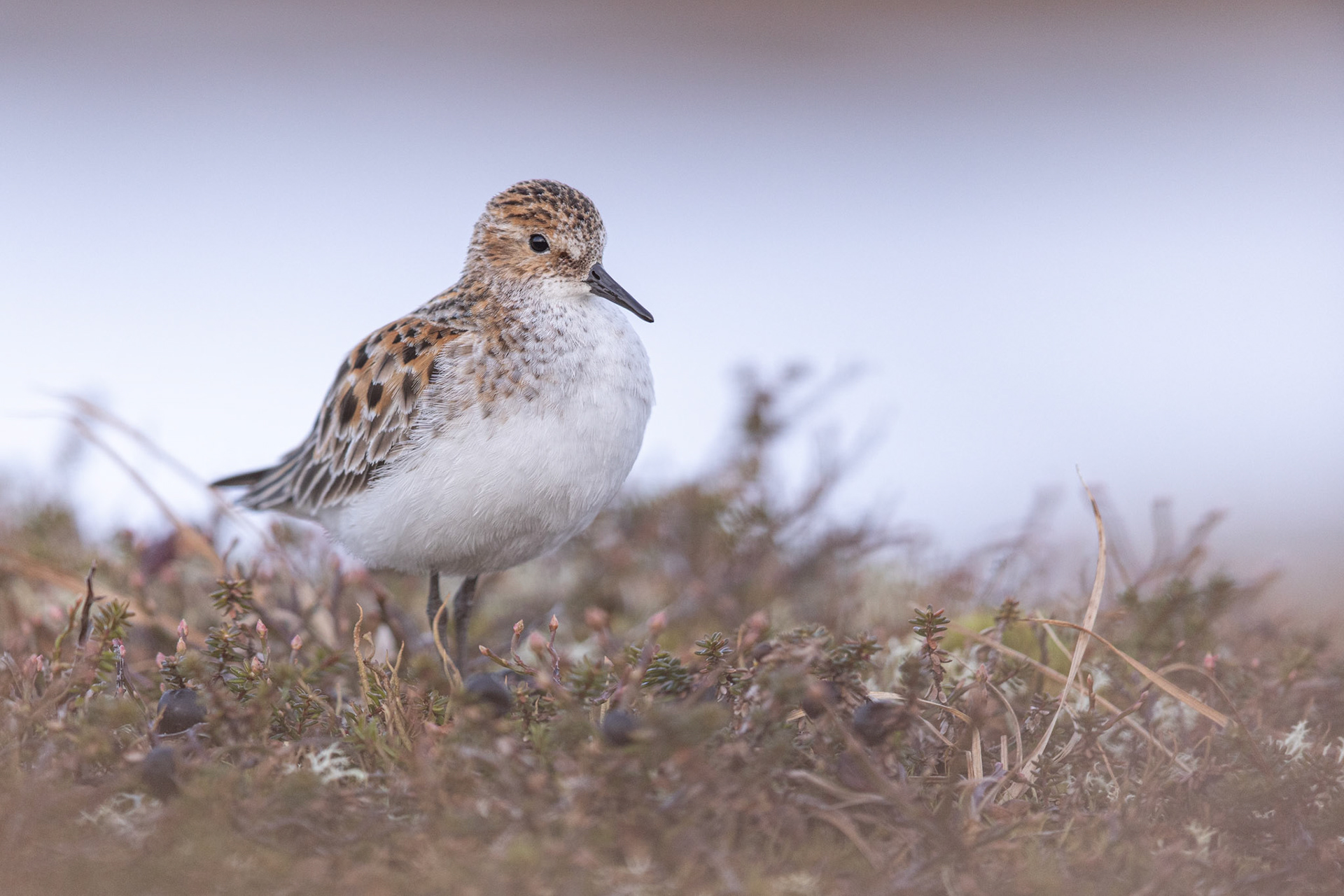



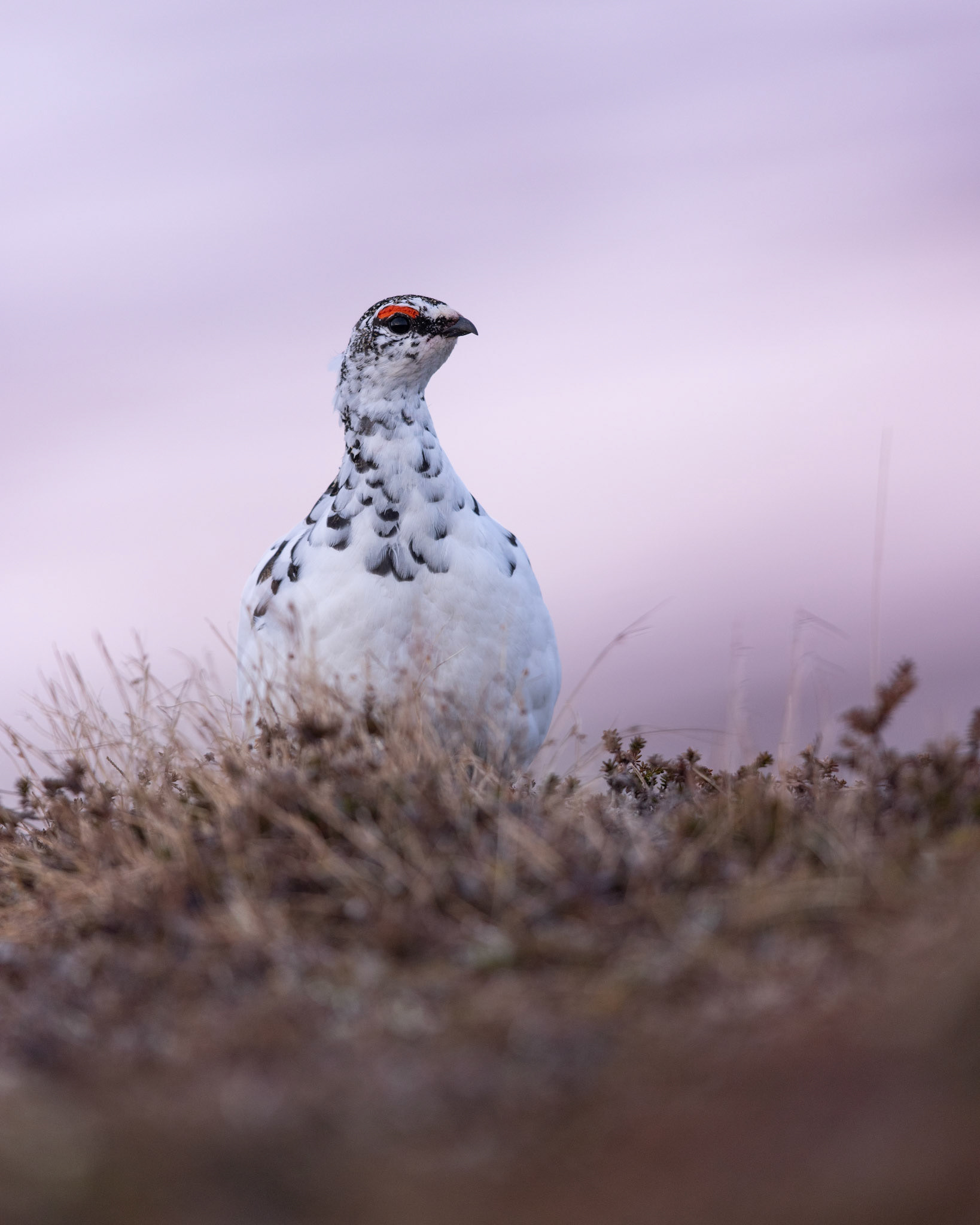
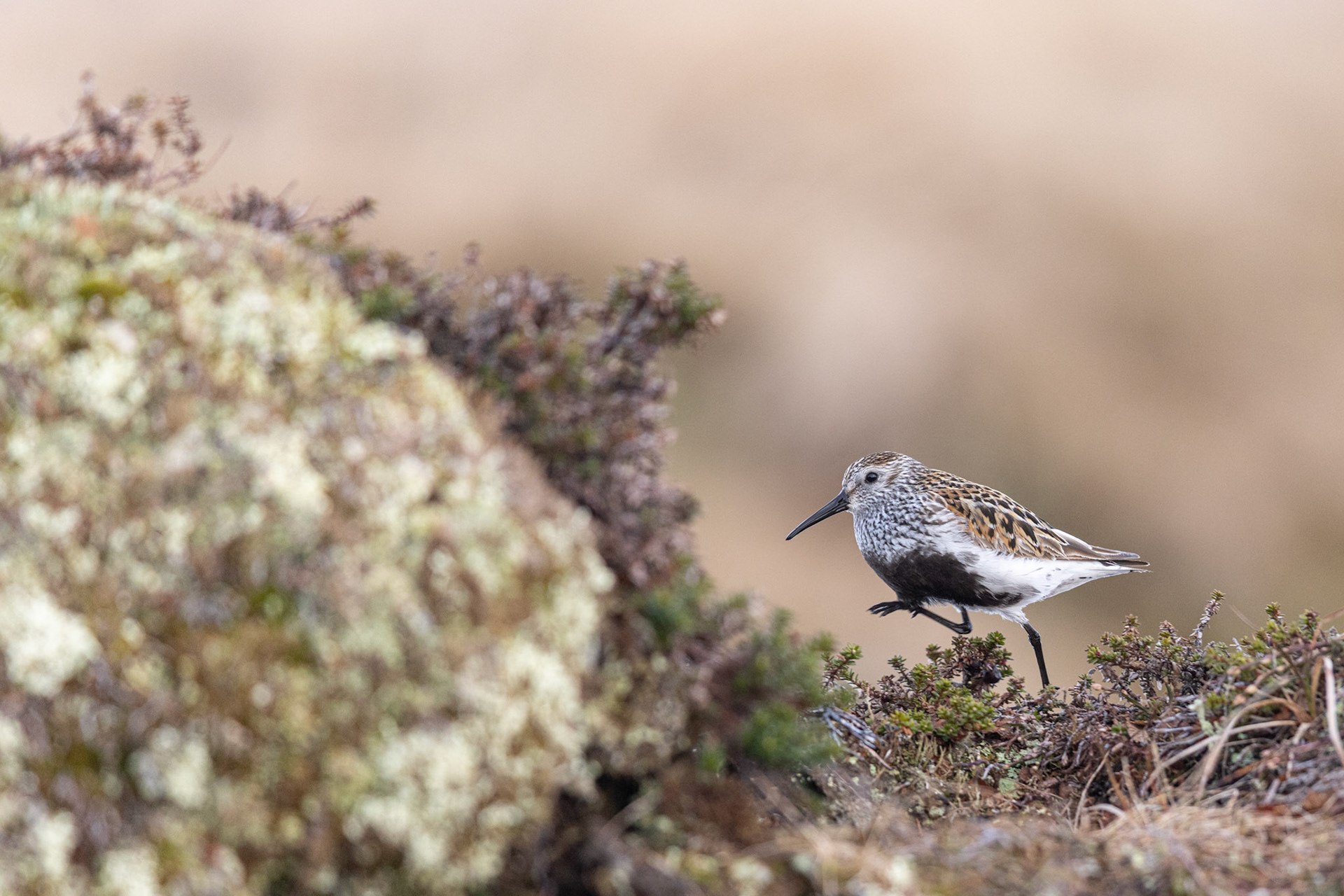
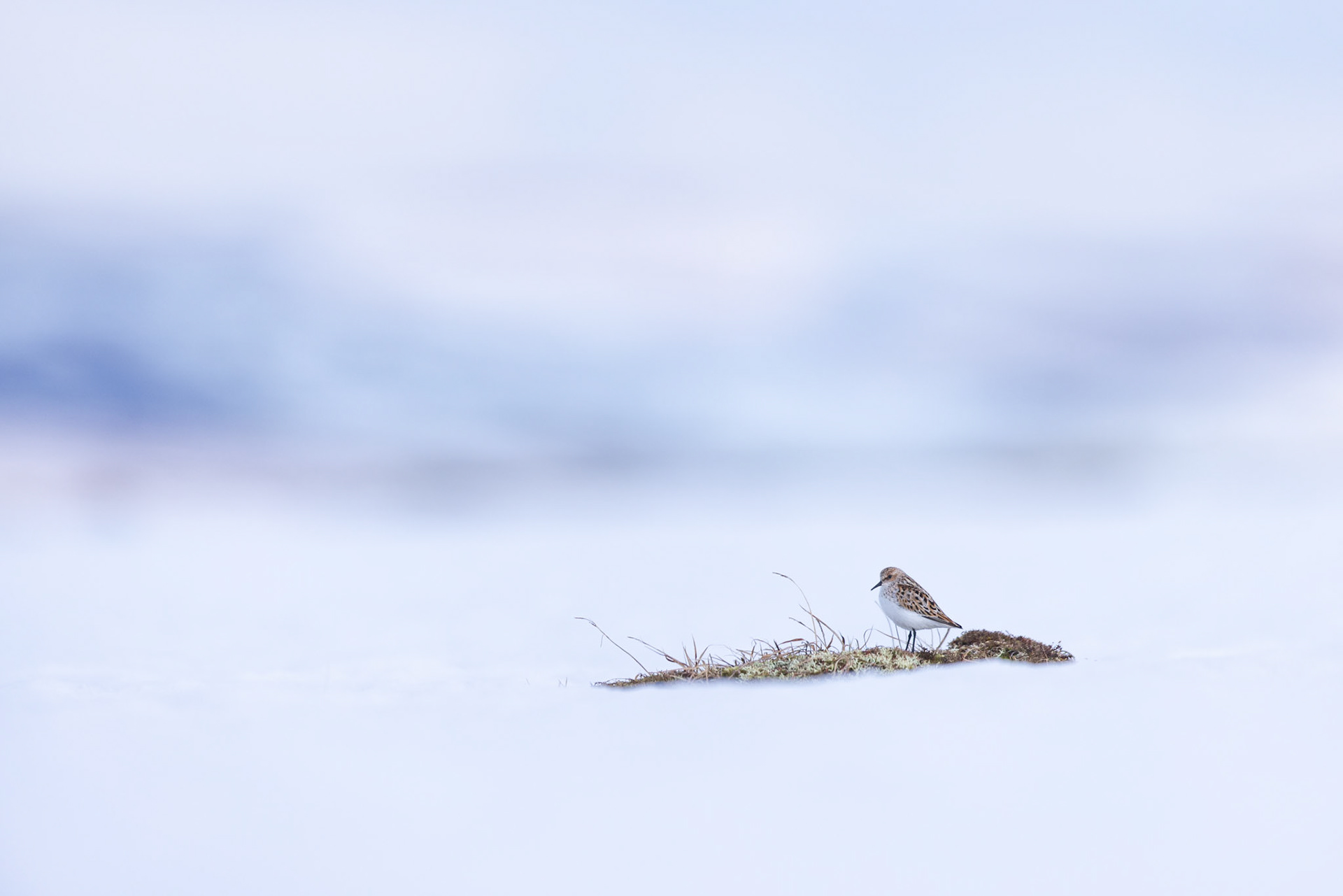
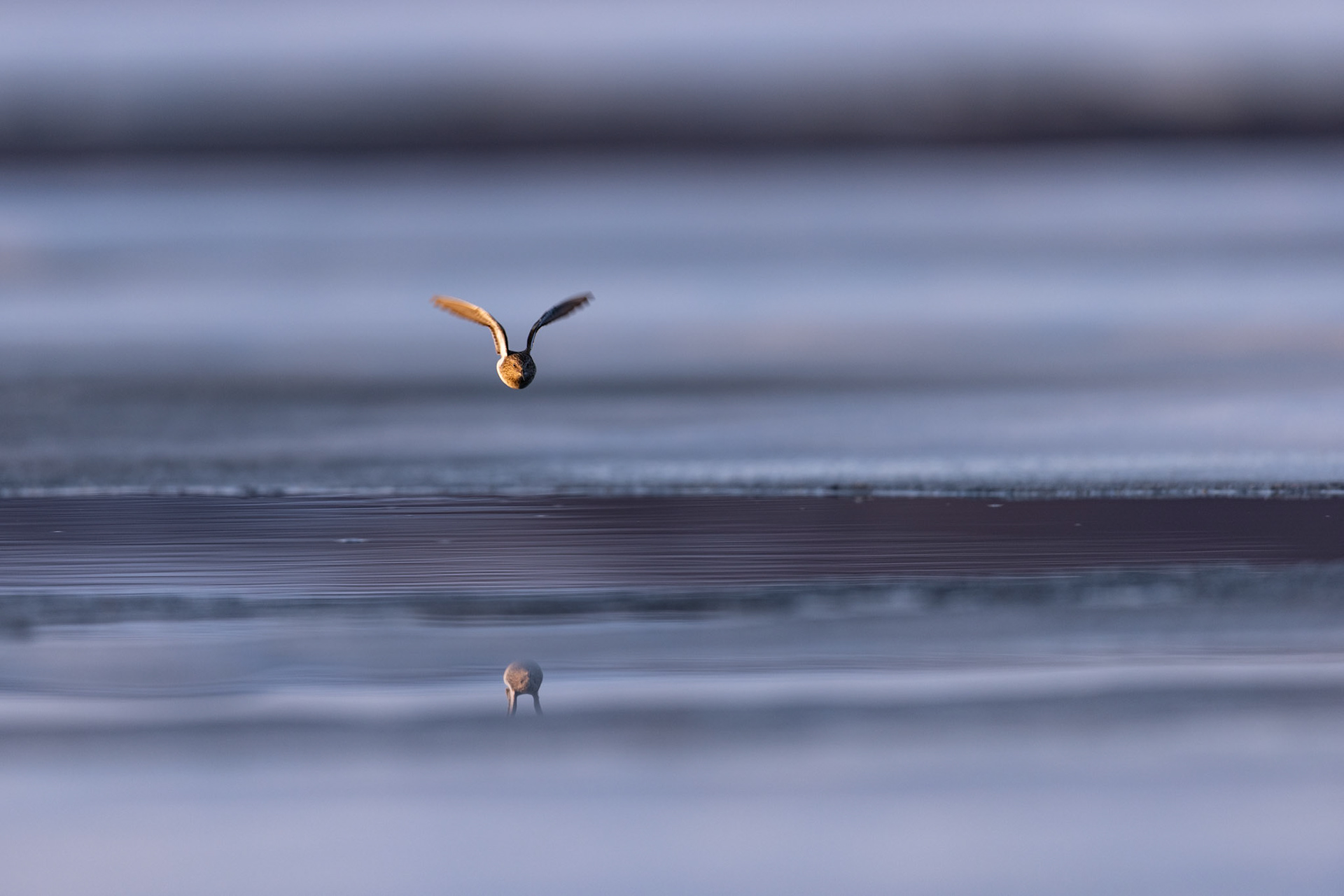
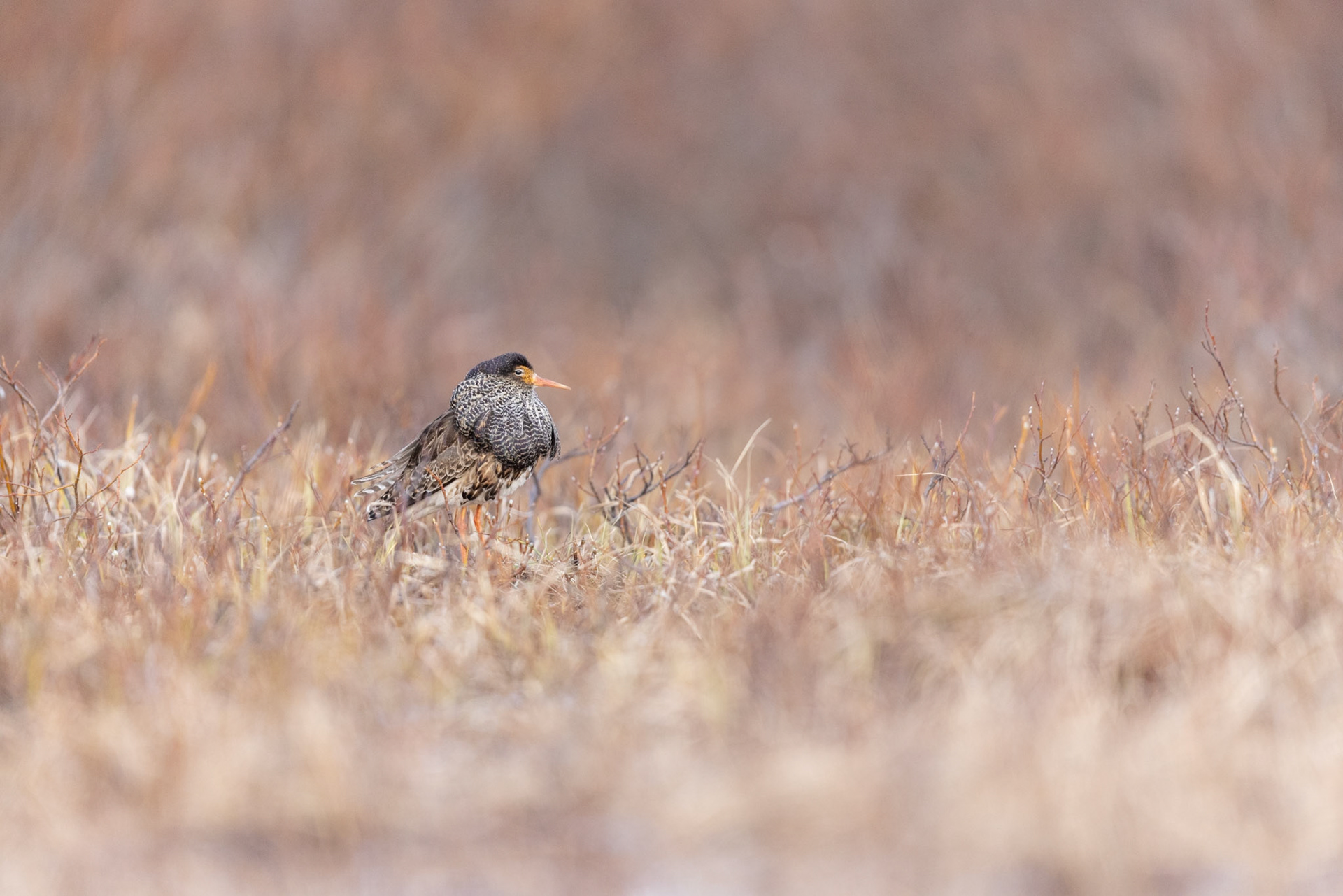

Day 6
After the long round trip from Vadsø to Båtsfjord and back, we were both feeling the effects of several intense days in the field. With the forecast for the night looking less than promising, we decided to take it slow. My friend opted to stay in, while I couldn’t quite resist heading out for a look around the area.
I started by checking a few spots in the tundra, but the evening proved quiet in terms of bird activity. The only real excitement came from a pair of furious Skuas who clearly weren’t thrilled by my presence. After a few low fly-bys, I got the message and made it back to the car just in time.
Not ready to call it a night just yet, I made a quick stop at Ekkerøya and had another walk along the beach. A few Common Ringed Plovers and a lone Redshank were the only birds around. quiet, but still worth a look.
With that, I decided to do something we hadn’t done much on this trip: get a proper night’s sleep. Sometimes, recharging is just as important as chasing the next shot, especially with one last night out still ahead.



Day 7
With our last night ahead of us, and still inspired by the incredible experience in Båtsfjord with Tobias, we decided to cancel our accommodation in Vadsø and stay in Båtsfjord for the final leg of the trip. It felt only right to close things out where so many highlights had come together.
On our way to the new accommodation, we spotted a Ruff lek site. To our surprise, the birds were somewhat active even mid-day, giving us a chance to capture a few nice portrait shots before moving on.
Feeling extra motivated, we left our accommodation an hour earlier than usual, and it turned out to be the right call.
Just 15 minutes into the drive, we came across a spot with a pair of Long-tailed Ducks, a dream species for my friend. As we watched, the birds kept their distance, and we were nearly ready to move on when a small group of Long-tailed Ducks flew in. Their arrival startled the original pair, causing them to fly off only to land right in front of me. One of them touched down less than three meters away. It was a moment that’s hard to describe - silent, close, and full of presence.
To make things even better, I also managed to photograph a Rock Ptarmigan in a low-key lighting situation that gave the image a unique, moody atmosphere, definitely being one of my personal highlights from the trip.
The following hours were quiet but peaceful. I finally captured the wider shot of Red-necked Phalaropes I’d been hoping for, bathed in the soft glow of the midnight sun, an image that perfectly summed up the serenity of the Arctic summer.
As the night—and the trip—came to an end, we had a few final encounters with Rock Ptarmigans wandering calmly across the tundra. A simple but beautiful way to close out a week of incredible experiences.
We will be back.







